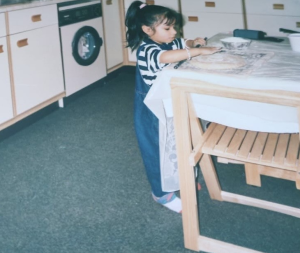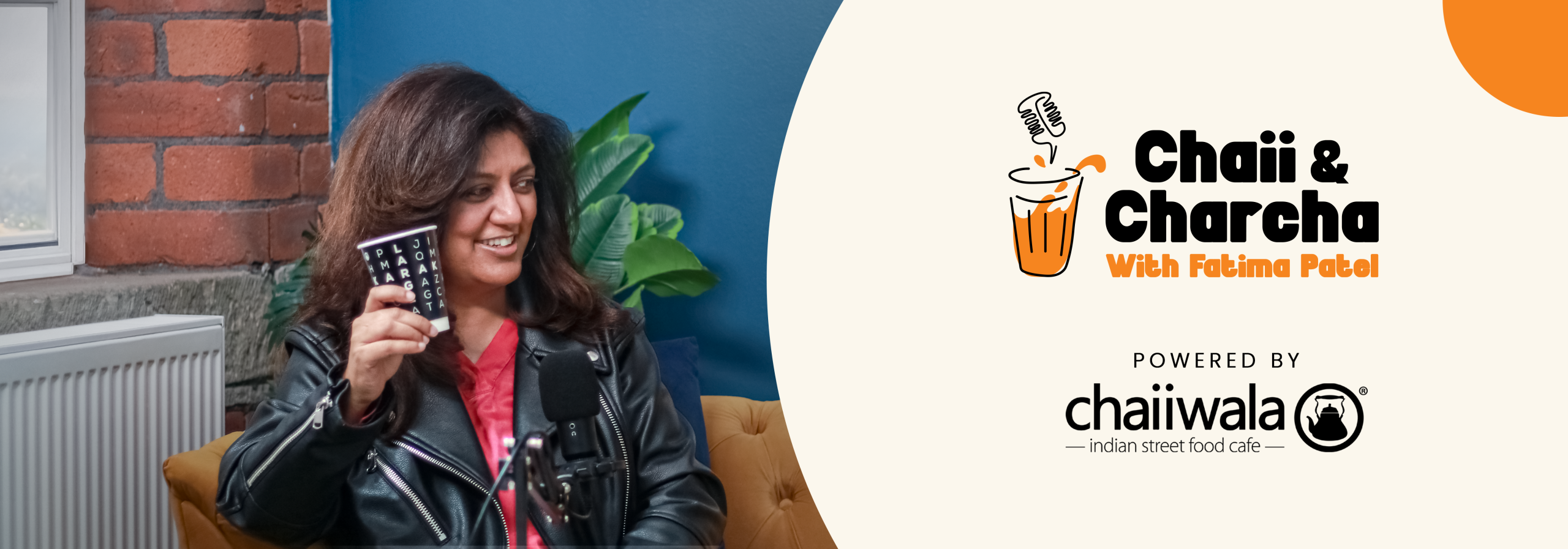Growing up in Bradford, Dee remembers the city as “a blessing in disguise”, a place where she could learn from friends of different cultures, swap languages in the playground, and bond over food that carried stories of home.
Now, the mother, teacher, and writer has poured that upbringing into something special: Gathiya Girl, a children’s book that is part story, part cookbook, and part songbook.
For Dee, the inspiration came from her daughters and their curiosity about food.
“When I’m in the kitchen, I’m always narrating what I’m doing,” she explained. “I wanted my girls to see cooking as something magical, the sound of the pressure cooker, the smell of mustard seeds crackling, the steam rising when you lift the lid. Those moments mesmerised them, and I thought: why not turn that journey into a story?”
A Bradford Childhood of Flavours
Food has always been central to Dee’s life in Bradford. Growing up in the Gujarati community, her home was filled with vegetarian staples, but living in a city where South Asian cuisines mingled meant she also enjoyed Pakistani dishes and other flavours.
She recalls her earliest and clearest memory of Prashad, the now-famous Gujarati restaurant that began as a small shop on Arncliffe Terrace.
“I remember seeing the shopfront, going inside, seeing Aunty behind the counter, and all the trays of dhokra and other dishes. It’s one of the things I remember so vividly.”
Food in Bradford, she says, was always about discovery, a new shop opening, an exciting taste to try, a reminder of how much the city thrives on its multicultural fabric.
Passing On Traditions

Image: Dee
At the heart of Gathiya Girl is a desire to pass traditions on to the next generation. Dee describes teaching her daughters to make chapatis, just as she tried to do at five years old, barely tall enough to reach the counter.
Now, her youngest can roll roti at just three years old.
“There’s a rite of passage, really, in making roti,” she said with a laugh. “It’s such a sweet bond between mothers and daughters, though I know plenty of boys who cook too! For me, it’s about recreating those fond memories with my own children.”
That bond is why Dee chose a young girl, Jia, as the book’s protagonist. “If we’re honest, most of us learned from our mums or our grandmothers,” she said. “This book celebrates that bond, women passing on love and tradition through food.”
More Than Recipes
But Gathiya Girl isn’t just about food. It mixes recipes with Gujarati words, culture, and even songs, blending the flavours of cooking with the rhythms of language.
Language, Dee says, is as much at risk of being lost as recipes are.
“If we don’t speak our languages, if we don’t cook the dishes from our kitchens, traditions are going to be lost. And that’s sad, because behind each dish is a story, a memory, an homage to our ancestors.”
She admits that one of the hardest parts of writing the book was navigating Gujarati dialects, so many different ways of speaking and writing. But that challenge, she says, was part of the joy.
“It reminded me of being 16 again, relearning Gujarati. It was about paying respect to the language and keeping it alive for the next generation.”
A Message of Hope
As a teacher, Dee has noticed how many young British Asian children are less familiar with their mother tongues than previous generations.
“My fear is that children won’t know what their original language looks like in writing,” she said. “Why should it only be seen on packaging or in religious spaces? Why not on our bookshelves?”
Publishers told her there wasn’t enough money in a project like this. But for Dee, Gathiya Girl was never about profit; it was about roots.
“As parents, we should give our children two things: wings and roots. This book is my way of giving them both.”
Bradford at the Heart
Gathiya Girl is as much a Bradford story as it is a Gujarati one. It celebrates the food culture of the city, the blending of traditions, and the everyday hope of parents wanting to give their children the best of both worlds.
It’s also a reminder of what Bradford does best: turning diversity into creativity.
For Dee, that’s the book’s ultimate message.
“Let’s celebrate what we have. Let’s not lose our traditions. We should be proud of where we come from and pass it on.”




